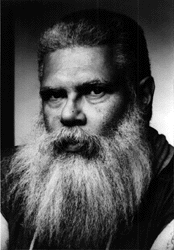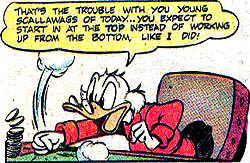Premiers say education and training key to Canada's economic future
Having a plan for economic development is seen as being a "planned economy'" in some folks minds, like the ruling Tired old Tories in Alberta.
Well all economies are planned, including the so called market economies. The plan can be obvious, such as government intervention in the economy ala Keynes or the plan can be, the Adam Smith secret hand of the marketplace, that is the corporate control of supply and demand. Yes market economies are planned economies, they are not 'free' associations of producers, so they have to plan.
Unfortunately when right wing nuts run the government for their business friends they let them do all the planning. Dumb move that. Cause they plan in quarters and bottom lines and fail inevitalibly to take into account the business cycle of boom and bust. Which is why all this talk about a Skilled Labour shortage in Alberta and increasingly across Canada is a great example of the failure of neo-liberalism and conservative governments to plan for the economy. They knew they had a skills shortage in Alberta in the late 1970's when the Oil Boom was in full swing here. I worked for the Department of Adanced Education and Manpower in 1980. There used to be two seperate departments Advanced Ed for Post Secondary Education and Manpower for labour needs, labour law, etc. The then ruling Tories, under Peter Lougheed, came up with the brilliant scheme to merge these two completely different departments into one in order to solve the Skilled Labour shortage at that time. But since they didn't have a plan or a philosophy as to what the focus of Post Secondary Education was in Alberta (and by the by they still don't) or should be nothing really changed. Universities produced managers, engineers and professionals, Technical Institutes like NAIT and SAIT produced workers, tradesmen, etc. And never the twain would meet.So what clever solution did the Alberta Government come up with to solve its skilled labour force crisis in both the oil patch and the construction industry? Importing workers, first from other provinces, such as Newfoundland, (which is why Fort McMurray is the biggest Newfie city in Canada) and when that wasn't working they began looking overseas. They also began the process of allowing private for profit insititutions like hair salons, to begin granting certificates and run apprenticeship programs (Esthetics is the biggest pink collar ghetto of young workingclass women in Alberta who enter trades).We had begun to develop a trades and apprenticeship program in High Schools under the previous Social Credit Government after the Woods Education Commission report. Several schools in Calgary and Edmonton began to offer skills instruction and pre apprenticeship training, such as W.P.Wagner High School in Edmonton.All of this came to a grinding halt in 1982 when the economic melt down affecting Canada and the rest of the G8 countries became a reality in Alberta, the bottom fell out of the gas and oil market while inflation hit double digits. All thought of skills training went out the window, as the Tories scrambled to save their asses, cause they hadn't planned for the economic boom and bust of capitalism. Duh oh.
Construction work disappeared, and wages fell, workers and management left the province in a rush to find work elsewhere. Skills training was no longer an issue, mere economic survival was.
Well here we are 25 years and one boom gone bust later, and we have the same old Tories in power and we have another skilled labour shortage, and their solution has been the same old same old:The shortage of skilled workers is acute in booming Alberta, says Intergovernmental Affairs Minister Ed Stelmach.
"You can pick any trade, any profession: we're having difficulty filling those spaces with people,'' Stelmach said.
"It's hitting us on every level, even in small rural communities. I've talked to small agriculture machinery dealers who say they can't sell any more harvesting equipment because they don't have people to put them together in time for harvest.''
The strength of Alberta's oil and gas sector has allowed it to steal workers from other industries and provinces, a short-sighted strategy that's now created a looming crisis. Stelmach says skill shortages are hurting Alberta's economy and he believes the impact will be felt elsewhere.
"We just won't be able to grow at the same rate if you don't have the people to build the plants, to provide the goods and services,'' he said. "We'd like to come forward with a common strategy amongst all the provinces so we can get an agreement with the federal government and get different options.''
Premiers to concentrate on workforce
By Judy Monchuk
Canadian Press
Students demand more cash from Ottawa
Aug 8 2005 CBC News
Quebec university and CEGEP students want the premiers to concentrate on one major issue when they meet this week: getting more money from Ottawa for post-secondary education. The student groups say the federal government cut billions from education and social programs in the 1990s to balance the budget.
Like Health Care, Post Secondary Education is a Provincial Responsibility. Ottawa has handed over transfer payments for years until the deficit hysteria took over in 1995 and then Finance Minister Paul Martin cut federal funds to the provinces. The problem with federal transfer payments is that the provinces put them in general revenues, and there is no strings attached to ensure they are used for what they are supposed to be used for. We are just supposed to trust our Provincial governments to do the right thing with taxpayers money. Ah hem. Right.
In Alberta awash in oil riches, a billion here or there is negligble, the Ralph Reich is opposed to spending on infrastructure or the public sector. But this is nothing new, in the late seventies and early eighties with the first big boom in Tar Sands development, there were fewer students in university and college in Alberta due to many of them working. The lure of big bucks was there and our post secondary institutions were going through a funding crunch even then.
Again there was no plan, no vision for what training was needed for working class kids, what there was of a paln by the Tory government was that while Oil made the province money, what created jobs was a state subsidized construction boom.
Vote buying is an old tradition in Alberta, it's colourful and apocraphile beginings were in booze for votes and having the local drunk vote more than once for the same candidate at different voting stations. By the time of Peter Lougheed Government awash in oil money, this became a full fledged program aimed at the construction industry in the province. The Lougheed government built universities, seniors homes and hospitals all over the province. What they didn't fund was enough staff for these institutions. That was always an after thought.
In universities and colleges if you wanted to staff the new buildings, you increased tuition fees and user fees to pay for it. In 1977-78 differential fees were introduced in Alberta universities for foriegn students. Despite wide spread protests, the fees were passed by Government appointed Boards at the Universities and Colleges.
This set the stage for the imposition of tuition increases that would follow for the next quarter of a century. That's right we have had tuition increases for 25 years now. And all they have done is expose the policy, the only policy the Alberta government has ever had towards post secondary education, of downloading provincial debt to institutions, faculty and students.
In an Interview I did with the then Deputy Minister of Advanced Education in 1980 he said that the reason the province imposed tuition fee increases was because "there were not enough students in university and college" to make up for the funding shortfalls. Funding shortfalls that were a result of the province limiting funds for staff and student support, but being generous with funds for capital projects' ie. buildings.
He said then "It's a chicken and the egg problem", not enough students means that there aren't enough operating funds for universities and colleges, so the government allowed them to increase tuition fees to make up for the lack of bodies. When I asked if the logic of this would result in a tuition decrease if the student population increased, he said no, it would just stay stable, that is at the last rate of increase.
Well that didn't last long, as the oil boom and the economy took a nose dive with the global crash of capitalism in 1984. Remember the Dark Thursday of 1984 when the stock market crashed the worst it had since 1929, of course you do. we all do because it caused massive inflation not seen since the Weimar Republic.
As Kim Moody points out in his book An Injury To All this was the begining of capitals declaration of Class War against the working class and its unions. Wages fell or were rolled back, while inflation was rampant people lost their homes unable to make boom time payments. The Real Estate market caught fire, and flipping became the big thing.
If you had the money for a downpayment you could buy a house and sell it in a week. Farms collapsed, and lenders forclosed on farming families, across North America. It was as bad as the time of the Great Depression, but the social safety nets absent then, were in place now to help ameliorate some of the worst of the bottoming out of the marketplace.
Still it was not enough and food banks were created as a short term solution to the food crisis of the working class now unemployed. They are still with us today. And it was the time when homelessness became visible to the middle class in their communities. No longer just the mentally handicapped or the addicts, the street people were joined by working class families with no homes and no jobs. And they are with us still.
The old fall back of the Lougheed era of state subsidies to the construction industry for building infrastructure was halted, as was attempts to invest in big time heavy industrial projects, like the Swan Hills Hazardous waste plant, an original Don Getty P3.
By the time of the Ralph Reign in Alberta the government still had no plan for post-secondary education, except to use it willy nilly to meet short term employment needs whether that was teachers or nurses, which had projections of shortages due to pending mass retirements in the ninties. Or the development of management and entreprenaurial courses,such as Management Studies at the University of Lethbridge, and including selling off entire departments to industry and corporations, such as the University of Calgary Petrochemical Engineering department.
While the arts, humanities and libraries were cut back in funding, practical employable skills programming in science, engineering, education, medicine, and business/mamagement studies flourished.
In K-12 education the attack was over back to basics, testing, and in the ninties charter schools, vouchers, and the rise of market competition for schools. In Edmonton Public the ultimate reform in education complete decentralization, known as School Based Management, was introduced in the dark days of the early eighties as the government reduced its comittment to funding public education.
This meant the end and destruction of embryonic apprenticeship programs at W. P. Wagner. By the mid-eighties vocational education in Edmonton Public Schools was like its German or Japanese counterparts, based on targeting or tracking students into a career path. Unfortunately in Edmonton, and across Alberta, that targeting was not of the average student the vast majority of whom would not be going to university, but to the underprivileged, the emotionally or phsyically challenged. It was reduced to remedial vocational education.
Showing a complete disregard for working class educational needs, W. P. Wagner in its final days as a vocational school was doomed to comics in the library and an armed cop on patrol.
The failure to link skills education and vocational training begining in High School with streaming into apprenticeships was not restricted to the Department of Education, but also the newly renamed Department of Advanced Education and Learning. Once again the departments were seperated, new empires were created for Cabinet Ministers, but no plan was developed to deal with post secondary education in Alberta. No plan for training the vast majority of students who graduate from High School and will not be going on to university doomed to become little business men; managers at Wal-Mart or hair stylists in someone elses salon.
This government never did have a plan for training or vocational education. In the ninties when faced with its debt and defecit hysteria it began an ambitious program of rebuilding Alberta along Republican lines, including transforming public education and post secondary education into fee for service, school based management, voucher system funding to further reduce the governments funding of education. It also encourage privatization of eduction especially vocational education with the introduction of American private colleges and fly by night computer colleges with certification.
That was its sum total plan after special hearings on the future of post secondary education. The same old government appointed boards of directors of Alberta universities and colleges remained, only with more corporate partners and corporate hacks in charge. Even the corporatization of post secondary education in Alberta was left up to the market, leaving each institution to compete with each other for students (provincial funding) and corporate sponsors (operational and infrastructure funding).
While a specialized school like Old Scona Academic, which is the top academic school in Alberta, could exist all this time and successfully graduate high school students with a BA equivalency in courses that was given credit at Alberta Universities, such did not exist for trades or vocational training.
In Edmonton and Calgary the Trades Unions put more High School graduates through apprenticeship training programs than either the Public or Catholic boards do. Skill training in the urban mileux is not seen as essential, it is however seen as essential in the rural and smaller urban communities in the province.
Still for the Alberta Government its vocational program for High School is seen as an after thought, not a neccisity.
Through out the ninties, the provinces benefited from getting direct EI funding from the Federal Government to implement trades training. In Alberta no such a program was developed, instead those funds went into the provinces general revenues. Once again ripping of both employees and employers who paid into the fund, and the society at large for failing our students and adult learners who might want skill training. Instead the goverment funded private for profit companies that taught you how to write a resume. This was the extent of skills training in Alberta.
In order to integrate a proper skills training program in Alberta for the working class majority it has to begin in High School tracking non university track students into trades. The program has to be credit based and credited as part of the students apprenticeship. In post secondary education both the Trades Colleges and the University need to cross credit courses, for instance, in welding students in Fine Arts at University should take welding at NAIT or SAIT, and welding students at these colleges should be able to take credit courses in abstract metal sculpture. All students in both institutions should be taking economics, politics, science and philosophy courses offered by universities. The motto should be that every plumber can read Shakespere. We don't need comic books in our public school libraries. And we don't need the ideology that says being a blue collar worker is for 'dummies' literally or figuretively.
But that is the attitude, we currently have in 9-12 primary education and post seconday education. Because we have no plan.







 t is common knowledge that China is the most important ascending world power, and one that has only begun to realize its economic and military potential. Before the World Trade Center bombings on September 11, 2001, neoconservative strategists in Washington identified China as the most significant future threat to U.S. interests and defined the Sino-American relation as one of "strategic competition" rather than "strategic partnership." Although the "war on terrorism" has taken precedence over the longer term conflict with China in Washington's geostrategy, the neoconservatives' pre-9/11 judgment was well founded and remains so.
t is common knowledge that China is the most important ascending world power, and one that has only begun to realize its economic and military potential. Before the World Trade Center bombings on September 11, 2001, neoconservative strategists in Washington identified China as the most significant future threat to U.S. interests and defined the Sino-American relation as one of "strategic competition" rather than "strategic partnership." Although the "war on terrorism" has taken precedence over the longer term conflict with China in Washington's geostrategy, the neoconservatives' pre-9/11 judgment was well founded and remains so.
 CBC Workers Blog, Podcast, use student radio
CBC Workers Blog, Podcast, use student radio



